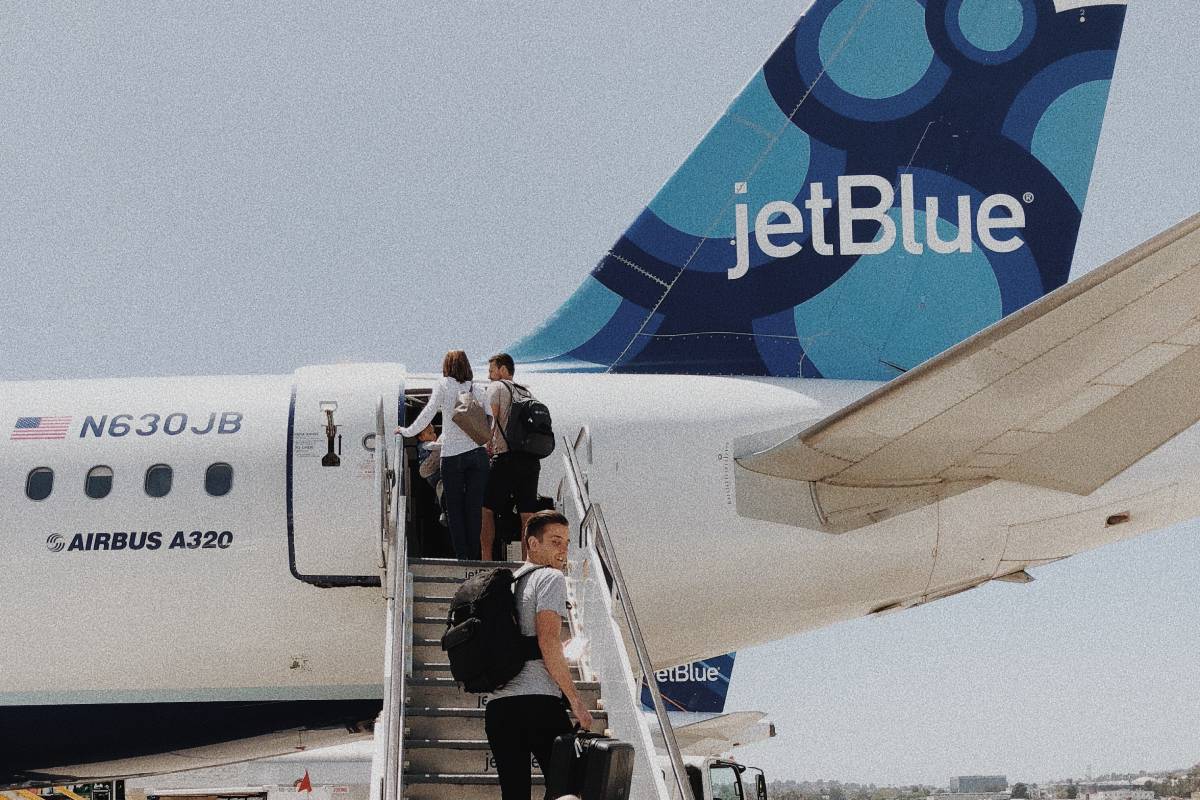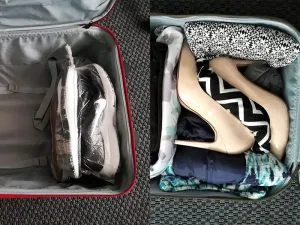 Ever caught yourself nervously gripping the armrest during turbulence, imagining every worst-case scenario that could occur mid-flight? That’s a universal air travel sentiment. But did you know that air travel is actually one of the safest forms of transportation? What if you could hop on your next flight armed with knowledge about the planes that prioritize safety above all else? You can breathe easy, we’ve got you covered.
Ever caught yourself nervously gripping the armrest during turbulence, imagining every worst-case scenario that could occur mid-flight? That’s a universal air travel sentiment. But did you know that air travel is actually one of the safest forms of transportation? What if you could hop on your next flight armed with knowledge about the planes that prioritize safety above all else? You can breathe easy, we’ve got you covered.
TL;DR:
- Airplanes have various safety ratings, but certain models stand out for their impressive records
- Boeing 737 series and Embraer E-Jet family are known for their outstanding safety
- Airbus’s A350, noted for its advanced technology, also boasts a stellar safety record
- Flying isn’t just about reaching your destination; it’s also about the journey’s safety and comfort
🥇 Boeing 737: The Trusted Veteran
The Boeing 737 series, with a safety record of 0.07 fatal accidents per million departures, has solidified its status as one of the world’s safest airplane models. Being one of the most widely used aircraft for commercial flights, it’s reassuring to know that its safety mechanisms are top-notch.
🥈 Embraer E-Jet Family: The Safe Sibling Quartet
Brazilian aerospace conglomerate, Embraer, may not be as well-known as Boeing or Airbus, but they’ve crafted a winning formula with their E-Jet family. Introduced in 2004, the E170, E175, E190, and E195 models have maintained an impeccable safety record with zero fatal accidents.
🥉 Airbus A350: The Technological Marvel
The A350 is a modern-day testament to aviation safety. As Robert W. Mann Jr., an aviation industry analyst, puts it, “The A350 is Airbus’s newest and most technologically advanced aircraft, and it has an impressive safety record. It’s not just about the technology, but also the training and the way the aircraft is operated that contributes to its safety.“
The Rest of the Best
While these three stand tall, they’re not the only players in the game. Other aircraft models like the Airbus A320 family, Bombardier CRJ series, and the ATR 72, among others, also provide highly secure environments for air travel.
So, What’s The Takeaway?
While there are numerous factors that contribute to a safe flight, the airplane model plays a critical role. So, next time you book a flight, keep an eye out for these safety stars. As you settle in for your next adventure, you can take comfort in knowing that you’re in the best of wings.
Further Reading
If you’re interested in delving deeper into the safety measures and records of these airplane models, here are some resources that you’ll find beneficial:
1. Boeing’s Safety Report: Gain comprehensive insights into the safety measures, processes, and records associated with the popular Boeing 737 series.
2. Airbus’s Safety Analysis: Delve into the advanced safety technology and impressive safety record of Airbus’s A350 model, along with their other aircrafts.
3. Embraer’s Safety Documentation: Learn more about the Embraer E-Jet family and understand why it has had no fatal accidents since its introduction in 2004. Armed with this information, you’ll not only be well-informed but also feel safer the next time you board a flight. Happy and safe travels!
Safety First: More Airplanes You Can Trust
✈️ Airbus A320 Family: The Dependable Clan
Next on our list is the Airbus A320 family. With over 8,000 aircraft of this family currently in service, the A320 is one of the most popular planes worldwide. Its solid safety record makes it a preferred choice for many airlines.
✈️ Bombardier CRJ Series: The Safe Short-hauler
The Bombardier CRJ Series is a family of regional jets designed for shorter flights. Although smaller in size, these planes don’t compromise on safety and have proven to be reliable options for domestic and regional routes.
✈️ ATR 72: The Sturdy Turboprop
The ATR 72 might be a turboprop aircraft, but it’s certainly no less safe than its jet counterparts. Known for its durability and operational efficiency, the ATR 72 has a commendable safety record.
💺 A Deeper Dive: How Airplane Safety Ratings Are Determined
Have you ever wondered how the safety of an airplane is measured? Understanding this can be a game-changer for those uneasy about flying.
✅ Safety Design and Construction
Safety starts at the drawing board. Engineers design aircraft with multiple layers of redundancy in key systems to ensure continued safe operation even if certain components fail. High-quality materials resistant to extreme temperatures and pressure changes are used to construct these machines.
✅ Regular Maintenance and Inspections
All commercial aircraft undergo rigorous pre-flight checks and regular maintenance to ensure every system is working correctly.
✅ Crew Training
A well-trained crew is the heart of a safe flight. Extensive training on flight operations, emergency procedures, and aircraft systems makes them adept at handling any situation.
✨ In the Spotlight: Top 10 Safest Airplanes
1. Boeing 737: With a safety record of just 0.07 fatal accidents per million departures, the Boeing 737 tops our list. It’s the veteran of the skies and a favorite among many airlines.
2. Embraer E-Jet Family: This includes the E170, E175, E190, and E195 models, all of which have maintained a flawless safety record with no fatal accidents since their introduction in 2004.
3. Airbus A350: The A350 is not only the newest, but also one of the safest offerings from Airbus, thanks to its advanced technology and rigorous operational procedures.
4. Airbus A320 Family: Another winning creation by Airbus, the A320 family is trusted worldwide and known for its strong safety record.
5. Bombardier CRJ Series: These regional jets are designed for shorter flights and have proven to be safe and reliable options for domestic and regional routes.
6. ATR 72: A turboprop aircraft known for its durability and operational efficiency, the ATR 72 has a commendable safety record.
7. Boeing 777: This long-range, wide-body airplane by Boeing is one of the safest aircraft with its state-of-the-art design and superior performance.
8. Airbus A380: The A380 is the world’s largest passenger airliner. Despite its size, it maintains an exceptional safety record.
9. Bombardier Dash 8: This series of turboprop-powered regional airliners is robust and reliable, with a solid safety track record.
10. Boeing 787 Dreamliner: The Dreamliner is Boeing’s most fuel-efficient airliner and is designed with the latest aviation technology, contributing to its excellent safety record. These are the cream of the crop when it comes to balancing commercial flight with safety considerations. Whichever you fly, rest assured you’re in safe hands.
Remember: Knowledge is Power!
Now that you have a behind-the-scenes look at what makes an airplane safe, you can embark on your next journey with a better understanding and a calmer mind.
Your Safety Is in Good Hands
Remember, while airplane models do play a role, the crew’s experience, the airline’s maintenance standards, and aviation regulatory measures are all crucial contributors to a flight’s safety. So, the next time you’re planning a trip, you can not only travel in style but also in safety!
FAQs
Which is the safest airplane model?
While there are many safe airplane models, the Boeing 737 series stands out for its impressive safety record.
Has the Embraer E-Jet family ever had any fatal accidents?
No, the Embraer E-Jet family, which includes the E170, E175, E190, and E195 models, has had no fatal accidents since its introduction in 2004.
Why is the Airbus A350 considered safe?
The Airbus A350 is noted for its advanced technology and impressive safety record. Not only its technology but also the rigorous training and operational procedures contribute to its safety.
What factors contribute to a safe flight?
Several factors contribute to a safe flight. These include the airplane model, the pilot’s expertise, weather conditions, maintenance procedures, air traffic control efficiency, and emergency response plans.
Are all airplanes safe?
While all airplanes must meet certain safety standards, some models have better safety records than others.
Are regional jet aircraft as safe as larger commercial planes?
Yes, regional jet aircraft, like the Bombardier CRJ Series, maintain high safety standards similar to larger commercial planes.
What makes a plane safe? Many factors contribute to a plane’s safety. These include the design and construction, safety features, regular maintenance, crew training, and adherence to safety regulations and procedures.
Is air travel safer than other forms of transportation?
Yes, statistically, air travel is considered one of the safest forms of transportation. It has fewer accidents per million passenger miles compared to other methods like car or rail travel.
What is the safety record of turboprop aircraft like the ATR 72?
Turboprop aircraft, like the ATR 72, have strong safety records. The ATR 72, in particular, is known for its durability and operational efficiency, contributing to its safety profile.
What should passengers do to ensure their own safety during flights?
Passengers can enhance their safety by paying attention to safety briefings, noting emergency exits, keeping seatbelts fastened during flight, and following crew instructions.
Are older airplanes less safe than newer ones?
Not necessarily. Older airplanes that have been well-maintained and updated can be just as safe as newer ones.
How can passengers contribute to flight safety?
Passengers can contribute to flight safety by adhering to the rules and guidelines provided by the flight crew, such as buckling their seatbelt and listening to safety briefings.
Is it safe to fly during bad weather?
Modern aircraft are designed to withstand a wide range of weather conditions, and pilots receive training on how to navigate during bad weather. However, severe weather can cause delays or cancellations for safety reasons.
Are there safety differences between larger and smaller airlines?
The size of the airline doesn’t necessarily determine safety. Both larger and smaller airlines are subject to the same safety regulations and inspections.
Do airlines have different safety records?
Yes, airlines can have different safety records based on various factors, including their maintenance practices, crew training, and the age of their fleet. Some airlines also voluntarily adopt additional safety measures.
Conclusion
Whether you’re a frequent flyer or an occasional traveler, the safety of your journey should never be compromised. With this knowledge of the top 10 safest airplanes, you can soar high with confidence.
No matter the destination, your journey should always begin and end with safety. Armed with the knowledge of the top 10 safest airplanes, you can now book your flights with added confidence and peace of mind.

 (5 votes, average: 4.20 out of 5)
(5 votes, average: 4.20 out of 5)













Deborah, your insights on sustainable living carry a special depth! How long have you followed a zero-waste lifestyle? In relation to your composting and recycling tips ammunition program, my firsthand experience has been that small daily choices can make a big difference.🍃 For anyone interested, try experimenting with minimalism, those two philosophies approach sustainability from exciting angles! Deborah, did you ever find reducing purchases challenging? Exchange within community tag-sale apps helped curb my consumerism graphically. Discussing shared values with like-minded souls triggered powerful behavior changes for me. Bravo, Green for painting waited solutions in cheap-winged trails, and engage us viewers in this global stride! 🌍